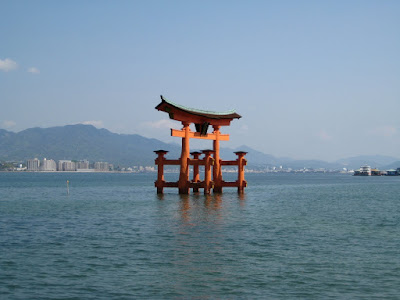Part of what makes this whole experience so powerful is the feeling that one gets when standing on the temporary ground. While inhabiting this space, there was never a moment that I was not reminded of this impending change. The most prominent indication of this is the dark watermark along the stone perimeter walls. This is reiterated by the groupings of algae that cover the base supports of the giant torii. Together, these features enable the visitor to envision the approaching water level in relation to their current position. Most will realize that by high tide the water is deep enough to cover them completely.
Because the island is so mountainous, the majority of settlements exist as part of a small town near the shrine. Our group spent the night at a ryokan, or traditional Japanese inn, within this town. Here, we were able to experience a very Japanese style of living involving tatami, yukata (a type of kimono), and communal baths. Late in the afternoon, we received a formal dinner comprised of a number of small dishes.

The following morning, we explored the interior of the shrine, and gazed out toward the gate while standing over the ocean waters.



















No comments:
Post a Comment